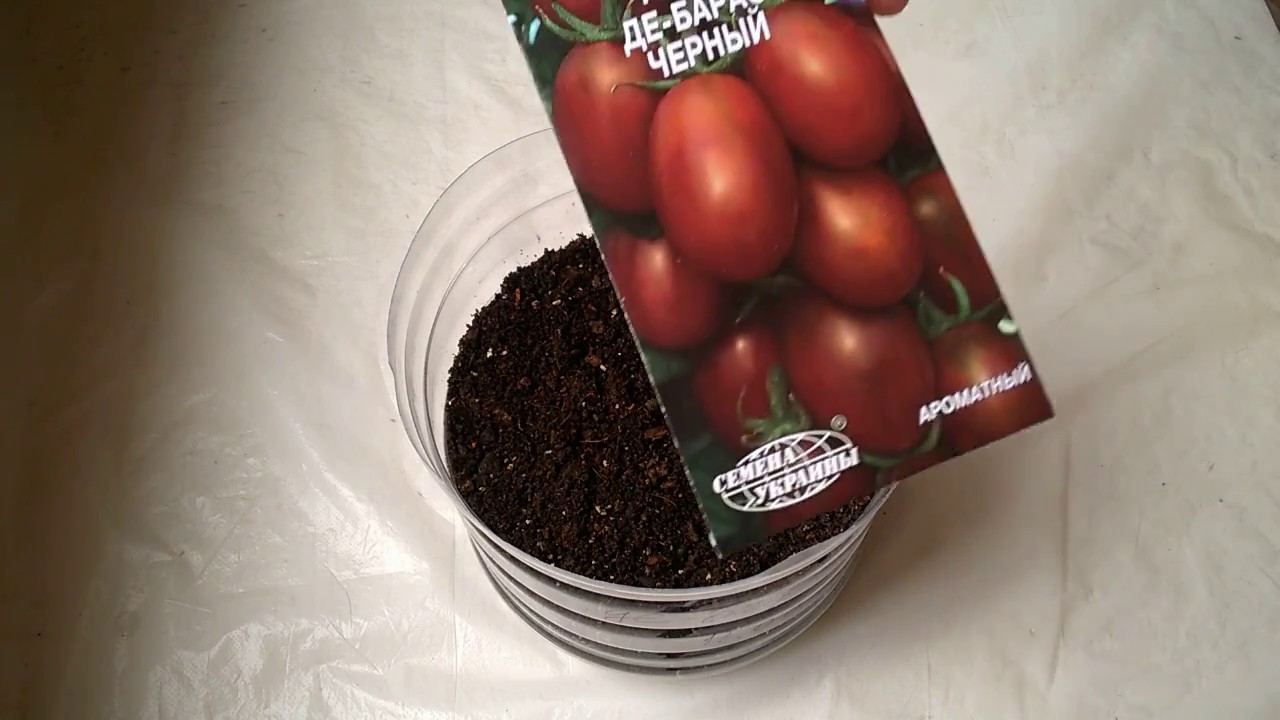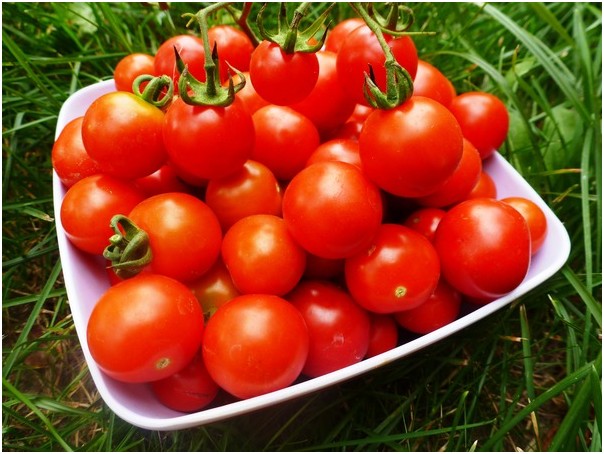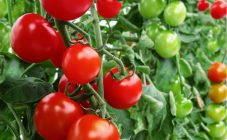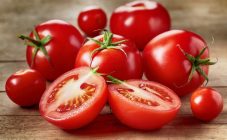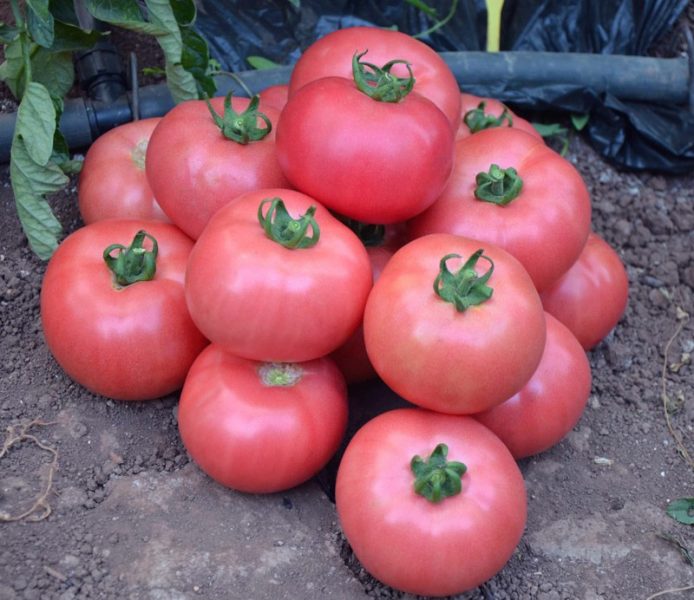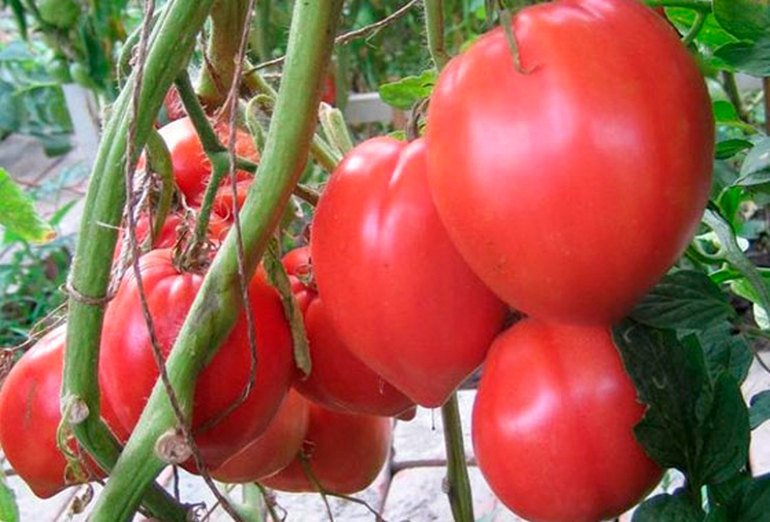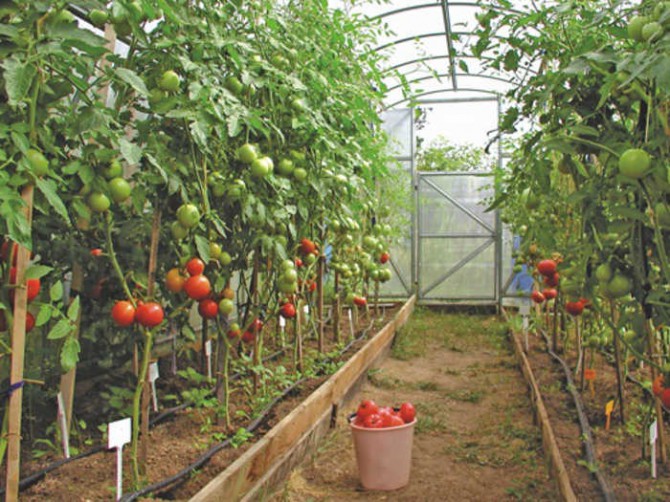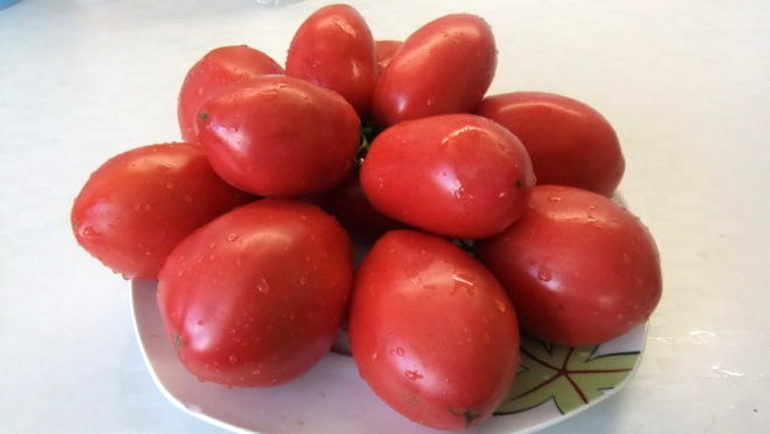Content:
Tomatoes are on the list of the most favorite vegetables grown by gardeners in the garden. Juicy red fruits are bought in stores and markets, used to prepare summer salads. Tomato is an integral part of most recipes and national dishes of countries around the world. In addition to the fact that the vegetable is distinguished by excellent taste, it also has a beneficial effect on the human body.
Vegetable origin
In ancestral times, tomatoes were used as ornamental plants. They believed that the tomato is a fruit. They were not eaten because they were considered poisonous and unfit for food. The homeland of the vegetable is considered to be South America, mainly they were grown in Peru and Ecuador, where you can still admire wild plants.
For the first time, the Incas and Aztecs were engaged in the cultivation and cultivation of bushes, who prepared food and various sauces using this vegetable. During the transportation of countless treasures, the Spanish conquerors brought the outlandish "Peruvian apples" and their seeds to European countries. But experts studying everything about tomatoes mistakenly found toxic substances in their composition, as a result of which they were not eaten. It was believed that the tomato is a berry or vegetable. Shrubs were used only to decorate greenhouses and garden beds, growing as home plants.
General characteristics and composition of tomatoes
Amateur gardeners often wonder what a tomato is - is it a berry or a vegetable? This is a vegetable that belongs to the nightshade family. The perennial is often grown as an annual vegetable crop. The stem has an erect or horizontal shape, and sometimes reaches 2 meters in length (the size depends on the variety of the plant).
Tomato leaves have an odd-pinnate and large appearance, often similar to potato tops. The fruits are juicy, multi-nested berries that have an irregular, elongated, spherical or heart-shaped shape. A distinct and characteristic varietal trait is the color and size of ripe tomatoes.
Ripe tomato fruits contain citric acid, easily digestible sucrose, carotene, mineral salt, as well as a vitamin complex, which consists of minerals of the group K, P, C and B. When compiling a daily diet, you should not neglect tomatoes, as they are charitable affect the body with such diseases:
- disturbances in the work of the cardiovascular system;
- anemia;
- unstable work of the digestive tract;
- eye ailments.
Required conditions for growing
In order to grow a quality crop, you need special conditions and enough heat. High sensitivity often causes seedlings to deteriorate and die even from a short drop in temperature. Seeds germinate only when the soil temperature range is 18 to 22 degrees Celsius above zero.
If the mark of the thermometer is below 15 degrees, this leads to a slowdown in growth and to the absence of bud formation on the plant. The reason that the seedlings will die is, in most cases, frost. Before sowing seeds, they must be subjected to a hardening procedure, fed with a potash or phosphorus mixture. This step-by-step care greatly increases the chances of getting a bountiful harvest.
Illuminated areas contribute to the good development of young and herbaceous plants, which, at the same time, are not at all whimsical to daylight hours and its duration. If you use shaded places in the garden to plant specimens, the plants will stretch in length, curl and practically not bloom.
Breeders have already bred 2 thousand different types and varieties of tomatoes, and this list continues to grow every day. To plant a particular variety, it is necessary to take into account the chemical and mechanical composition of the soil, the climatic features of the area. It is not excluded the selection of a suitable option for tomatoes, which will bear fruit abundantly without responding to the effects of climate.
By combining two methods of growing a vegetable - closed land and an open garden plot - a good harvest is achieved. Tomatoes begin to actively grow and bear fruit from the second half of July and until the first autumn colds come. To obtain fresh vegetables for salad, early-ripening varieties of tomatoes are used, but they are not suitable for pickles for the winter. The duration of their cultivation reaches 3.5 months.
Tomatoes are planted in loamy or sandy soil with a light mechanical structure. The full development and life of seedlings is possible only if organic fertilizing and polycarbonate are first introduced (the amount depends on how much open soil is). Alfalfa, peas, cabbage, zucchini, carrots, cucumbers or onions can be used as a precursor crop.
The process of preparing the soil for planting seedlings or seeds should begin no earlier than the second half of October. The earth is dug up, then a mineral mixture is added with the addition of compost or rotted manure. With the onset of spring, you need to harrow and feed future seedlings using ammonium nitrate in the form of a solution or granules. You can use modern complex fertilizers with organic-mineral composition.
The benefits of tomatoes
At the initial stage of the existence of this vegetable, its beneficial properties were not found. It was believed that the tomato is a vegetable or fruit that is unhealthy and poisonous. For several centuries, its composition has been thoroughly studied by specialists, but even today there is some disagreement as to whether tomatoes are toxic or not. The first and undoubted characteristic of the culture is its excellent taste. The various minerals and vitamins contained in the composition make the vegetable healthy.
The culture is rich in citric, malic and tartaric acids. Most people believe that fresh fruits and vegetables are healthy only fresh, but tomatoes are healthier when boiled. Thanks to its serotonin content, tomato tomato often acts as a powerful antidepressant. He is able to debug the functioning of the nervous system and tune in a positive way. Phytoncides prevent bactericidal and inflammatory processes.
The seeds of the culture contain beneficial bacteria that thin blood cells and prevent the development of thrombosis. Tomato planting material is used as an excellent prophylactic agent for the treatment of heart attacks and many serious ailments. The skin of the vegetable has a beneficial effect on the gastrointestinal system. It contains lycopene, a powerful antioxidant and natural medicine for many diseases.
Lycopene is a substance that can prevent the formation of cancer cells, as well as the process of DNA mutation.The beneficial properties of tomatoes increase with the parallel use of vegetable oil, due to the fact that vegetable fats contribute to the good absorption of lycopene. The presence of red in this vegetable is due precisely to lycopene.
Tomato treatment
Due to the high level of nutrients, tomatoes can cure many diseases. With gastric ailments, tomato juice is excellent, quickly relieving constipation, which indicates diseases of the gastrointestinal tract or duodenum. Cardiovascular diseases include treatment with whole tomato salads or tomato juice.
Heat-treated vegetables, just like fresh ones, are an excellent remedy against all stages of atherosclerosis. Avitaminosis is effectively treated due to the high content of minerals and vitamins. In the event that a bad external type of nails and hair is recorded, it is necessary to include tomatoes in the complete diet and stock up on vitamins.
Traditional medicine indicates that burns and wounds are also treated with tomatoes. You need to cut a vegetable and apply half to a fresh wound, the bactericidal and antiseptic properties of tomato juice will have a beneficial effect. Mixing egg white with juice for a burn should be applied to the affected area. This will speed up the recovery process and minimize pain.
During the Indian tribes, tomatoes were used to increase potency. Over time, scientists have found that culture has a positive effect on the sex glands and their active functions.
Harm from tomatoes
Despite the beneficial properties, any vegetable also has negative sides. Among the most important negative qualities of tomatoes, what stands out is that it often causes an allergic reaction. Due to the tendency of people to food allergies, the use of this vegetable in large quantities is strictly prohibited. Oxalic acid found in fruits provokes a violation of water-salt metabolism, therefore, with arthritis, gout and kidney diseases, they also cannot be eaten.
Sometimes you can come across such a point of view that frequent consumption of tomatoes or tomato juice can cause nicotine addiction, but the veracity of this reasoning has not been established. With gallstone diseases, the abuse of fruits is excluded, since this will lead to the fact that the stones will later get stuck in the gastric duct or provoke an increase in stones.
Salted, canned and pickled tomatoes should not be greatly abused by people with heart disease, hypertension and kidney failure. Due to tomato juice and tomatoes, the bladder and kidneys are prone to stone formation.
.
Popular tomato varieties for Russia and the Moscow region
When choosing a suitable variety for planting in the Moscow region, one should be guided by temperature jumps, high air humidity and the onset of frost from the second half of October. Tomatoes are lovers of warm climates, and the listed conditions are unfavorable for them. For cultivation in the regions of the Moscow region, varieties are selected that are called early or mid-season. It will not matter where the seeds will be planted - in the greenhouse or in the open ground.
To get a rich harvest in Moscow and the Moscow region, you need to pay attention to the following varieties of tomatoes:
- Phytous. A species with good yields despite weather conditions. The culture is resistant to diseases such as late blight, as well as to damage by various pests.The fruits are stored for a long period of time, and are not damaged during transportation. They are often used in the preparation of vegetable preparations, snacks, salads and juices.
- Bovine ear. A variety with indeterminate properties, the ripening and harvesting period takes a very long period. Gardeners and vegetable growers speak of the great popularity of this variety. Vegetables have an elongated shape, fleshy and sweet flesh, dense rind. The variety belongs to the salad variety, but it is also used for making pasta, canned vegetables and classic tomato.
- Alenka. This species is very early, hybrid and short. Does not react to weather conditions, resistant to fungi and infections. Differs in juicy and sweet fruits.
Gardeners who are going to start growing crops need to study absolutely everything about tomatoes: description, characteristics and yield data. This will help you avoid common mistakes and get a tasty harvest. Also, do not ask yourself what a tomato is - is it a vegetable or a fruit, since the unambiguous answer is a vegetable.


